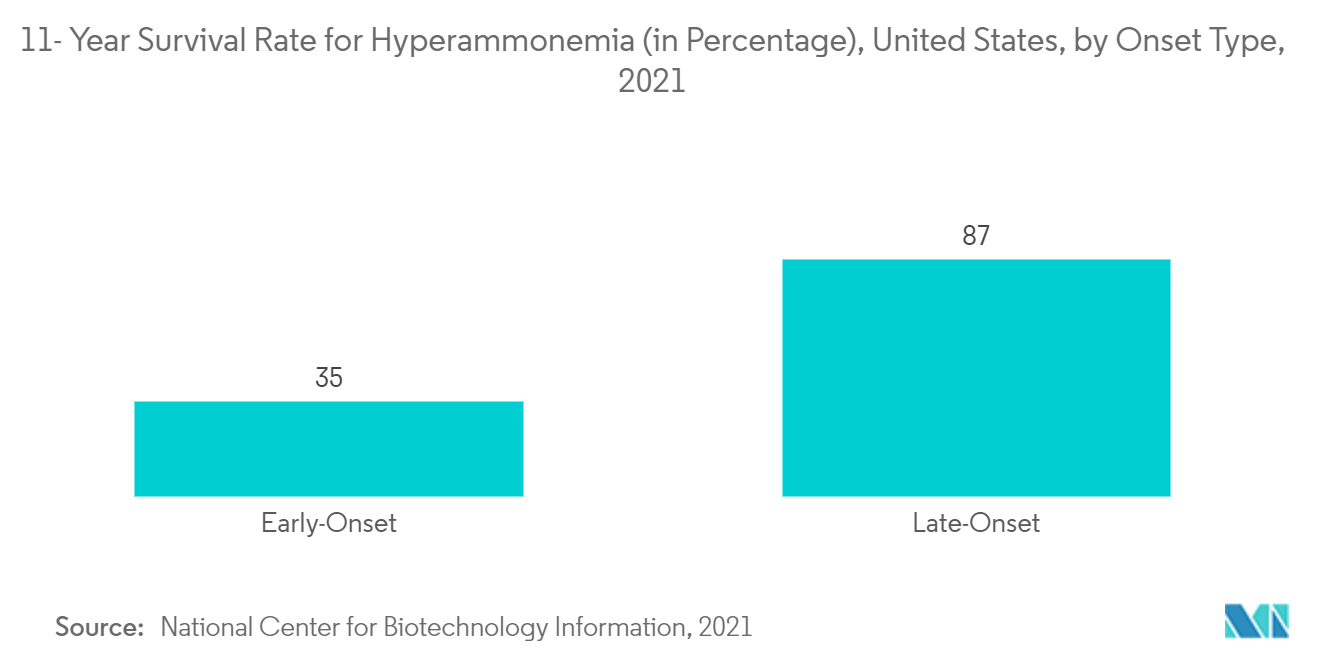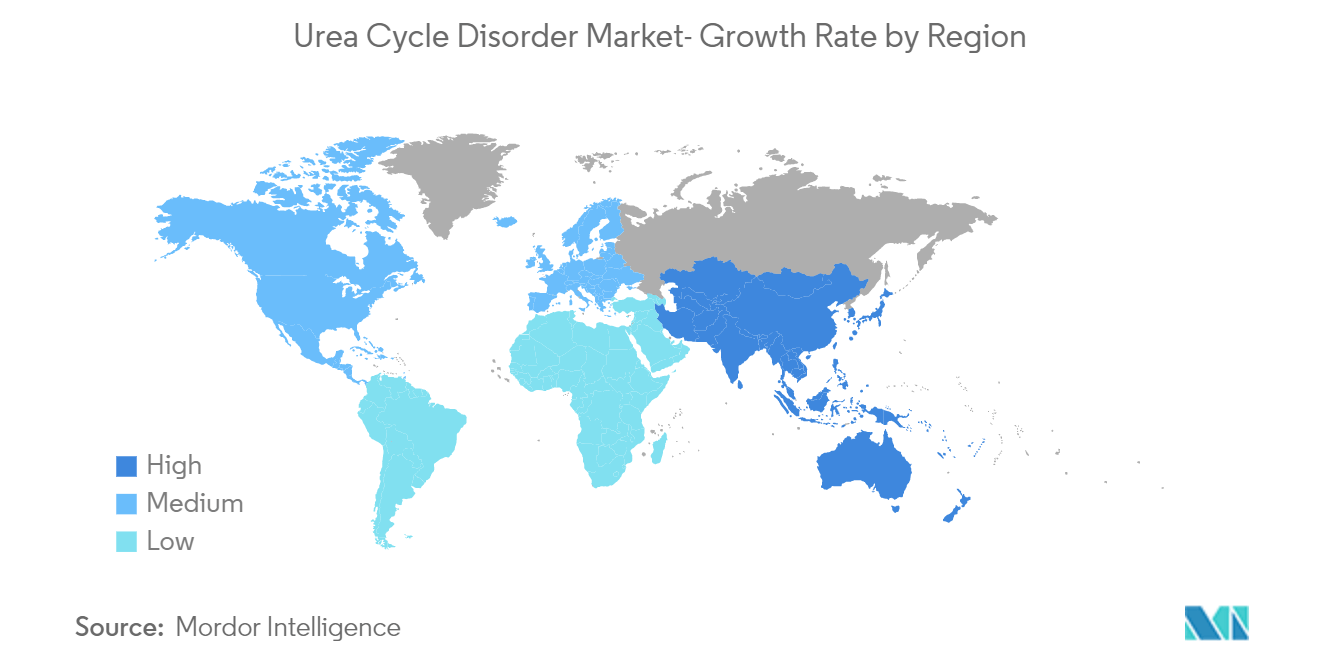Market Trends of Global Urea Cycle Disorder Industry
This section covers the major market trends shaping the Urea Cycle Disorder Market according to our research experts:
Ornithine Transcarbamylas Segment is Expected to Account for the Largest Market Share During the Forecast Period
Ornithine transcarbamylase deficiency is a highly prevalent urea cycle disorder. It is an X-linked genetic disorder that prevents the breakdown and excretion of ammonia. It allows ammonia to accumulate, rising to toxic levels where it affects the central nervous system.
The factors such as product approvals, rising research and development, and strategic initiatives adopted by key market players are expected to contribute to the significant growth of the market.
For instance, in July 2021, Arcturus Therapeutics Holdings Inc. received approval from the UK Health Research Authority to initiate a Phase II clinical study for ARCT-810, a novel mRNA-based therapeutic candidate for Ornithine Transcarbamylase (OTC) Deficiency. Also, in April 2020, the company accepted two clinical trials for its flagship asset ARCT-810. The Company's Investigational New Drug (IND) application for a Phase Ib study in patients with OTC deficiency was allowed to proceed by the United States Food and Drug Administration (FDA), and an additional Clinical Trial Application (CTA) for a Phase I study in healthy volunteers was approved by the New Zealand Medicines and Medical Devices Safety Authority (Medsafe). Thus, with rising product approvals and research and development activities, the studied segment is expected to introduce effective therapeutics to boost the market's growth.
The study 'Effect of Ornithine Transcarbamylase (OTC) Deficiency on Pregnancy and Puerperium,' published in January 2022, highlighted that pregnancy, childbirth, and the postpartum period are considered challenging for women with this hereditary metabolic disorder, with a risk of hyperammonemia, especially in the first week after delivery. Therefore, a demand for the gradual increase of protein intake and other therapeutics indicates huge market potential.
According to the study 'Corticosteroid suppresses urea-cycle-related gene expressions in ornithine transcarbamylase deficiency,' published in March 2022, early intervention by renal replacement therapy in cases of UCD patients induced by corticosteroids to avoid brain injuries or fatal outcomes will increase the demand for OCT deficiency treatment, thus, driving the market.
Thus, due to the abovementioned factors, the studied segment is expected to contribute to the significant growth of the market.

North America is Expected to Hold a Significant Share in the Market and Expected to do Same in the Forecast Period
The primary driving factors for the growth of the North American urea cycle disorder market are the rising prevalence of urea cycle disorders in the region and the increasing number of pipeline products. In addition, rising product launches and other strategic initiatives such as mergers and acquisitions and partnerships are also expected to drive the market's growth.
The United States within North America is expected to hold a significant share of the studied market during the forecast period. For instance, according to a study published in January 2021, titled 'Management of Late Onset Urea Cycle Disorders-A Remaining Challenge for the Intensivist?' The annual incidence in the United States is 1: 35,000 births which represents 113 new cases per year. Thus, there is a high burden of UCDs on the United States healthcare system, increasing the demand for its diagnostics and therapeutics, thus, driving the market.
Additionally, product development and associated technological innovation will offer more advantages and overcome the existing challenges, leading to lucrative market growth. For instance, in October 2021, Acer Therapeutics Inc. and its collaboration partner, RELIEF THERAPEUTICS Holding SA, announced that the U.S. Food and Drug Administration (FDA) had accepted for filing of the New Drug Application (NDA) for ACER-001 (sodium phenylbutyrate) for the treatment of patients with Urea Cycle Disorders (UCDs).
Moreover, rising research and development activities in the studied market will help evaluate the efficacies of existing treatment and boost the pipeline of drugs, thus driving the market. For instance, a study was initiated in March 2021 to conduct post-marketing surveillance of carglumic acid (Carbaglu) to obtain long-term clinical safety information. Carglumic acid was approved by the United States Food and Drug Administration (FDA) for the treatment of acute hyperammonemia due to N-acetyl glutamate synthase (NAGS) deficiency. Thus, positive results from these studies will boost the adoption of therapeutics, thus driving the market's growth.
Therefore, due to the abovementioned factors, the studied market is expected to lead to lucrative growth of the market in North America.


